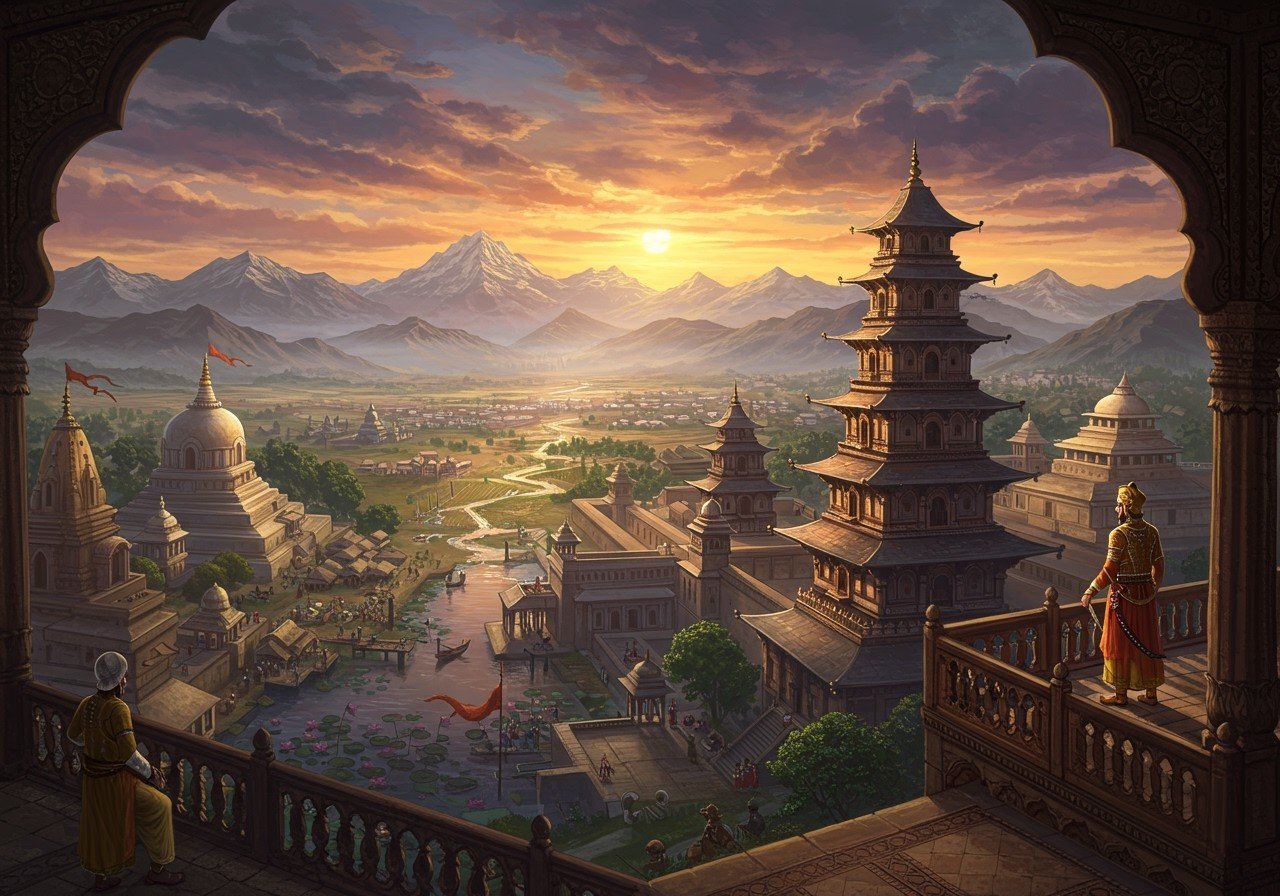
The Karkota dynasty, reigning over the Kashmir valley and parts of northern India from approximately 625 to 855 CE, significantly shaped the region’s trajectory. This era witnessed political expansion, economic prosperity, and Kashmir’s rise as a hub of culture and scholarship. This blog delves into the dynasty’s origins, its zenith under influential rulers, comparisons with contemporary empires, and the factors that precipitated its decline.
Origins of the Karkota Empire
Emerging in the early 7th century CE, the Karkota dynasty inherited a politically fragmented Kashmir. Durlabhavardhana, the founder, embarked on a mission of unification, strategically leveraging Kashmir’s advantageous location. This process, however, was fraught with challenges, including conflicts with neighboring regions. Religion, encompassing both Hinduism and Buddhism, played a pivotal role in consolidating their rule. Early strategies emphasized robust administration and military prowess.
The Golden Age under Lalitaditya Muktapida
Lalitaditya Muktapida, the most renowned Karkota ruler (around 699-735 CE), spearheaded military campaigns that extended the empire’s influence beyond Kashmir. His reign witnessed remarkable architectural achievements, exemplified by the Martand Sun Temple. Economic prosperity flourished due to vibrant trade networks, while administrative reforms streamlined governance and enhanced stability. Lalitaditya also cultivated diplomatic ties with powerful entities like the Tang Dynasty of China. Furthermore, his patronage of art, literature, and education fostered a cultural renaissance in Kashmir.
The Karkota Empire in a Global Context
Comparing the Karkota Empire with the Umayyad Caliphate (661-750 CE) reveals divergent approaches to governance and cultural policies. The Karkotas prioritized regional dominance while preserving distinct cultural identities, contrasting with the Umayyad’s expansive, Islam-centric rule. Juxtaposing the Karkotas with the Mauryan Empire (322-185 BCE) highlights differences in administrative structures and territorial control. The Mauryans established a highly centralized empire, while the Karkotas maintained a more regional focus within Kashmir. Both empires, however, left an indelible mark on India’s historical and cultural landscape.
Decline of the Karkota Empire
The decline of the Karkota dynasty stemmed from a confluence of factors. Internal conflicts and succession disputes eroded central authority, while external invasions exacerbated instability. Economic hardships and administrative inefficiencies plagued later rulers. Shifting religious and cultural dynamics led to diminishing support, and natural disasters further compounded the empire’s vulnerabilities. Ultimately, the Karkota Empire succumbed to these pressures, becoming absorbed by subsequent dynasties.
The Enduring Legacy
The Karkota Empire’s legacy continues to resonate in Kashmir’s cultural and historical tapestry. Architectural marvels like the Martand Sun Temple stand as testaments to their achievements. Their contributions to literature, art, and education shaped Kashmir’s cultural identity, documented in historical narratives such as Kalhana’s Rajatarangini. Karkota traditions influenced subsequent dynasties and practices, solidifying their lasting impact.
Poojn.in: Connecting You with India’s Rich Heritage
Poojn.in, India’s leading provider of cultural and religious goods, offers a wide selection of products that connect you with India’s rich traditions. Explore our collection to discover items related to the Karkota era and the broader cultural heritage of Kashmir.
- Brass Items for Puja and Rituals: Discover authentic brass items reminiscent of those used during the Karkota period, perfect for traditional pujas and rituals. We offer a variety of sizes and styles to suit your needs.
- Sacred Statues and Murtis: Explore our collection of sacred statues and murtis, including depictions of deities revered during the Karkota era. Honor the rich tradition of Hindu worship with beautifully crafted pieces.
- Incense and Puja Materials: Enhance your spiritual practices with high-quality incense and puja materials. Create a sacred atmosphere in your home with traditional fragrances and essential ritual items.
Explore our full collection at www.poojn.in and deepen your connection with India’s vibrant cultural heritage.
Further explore the Karkota dynasty and related topics through our curated blog posts:
- Kandariya Mahadeva Temple: Religious Importance and History
- Shankaracharya Temple: Spiritual Heart of Kashmir – A Deep Dive


